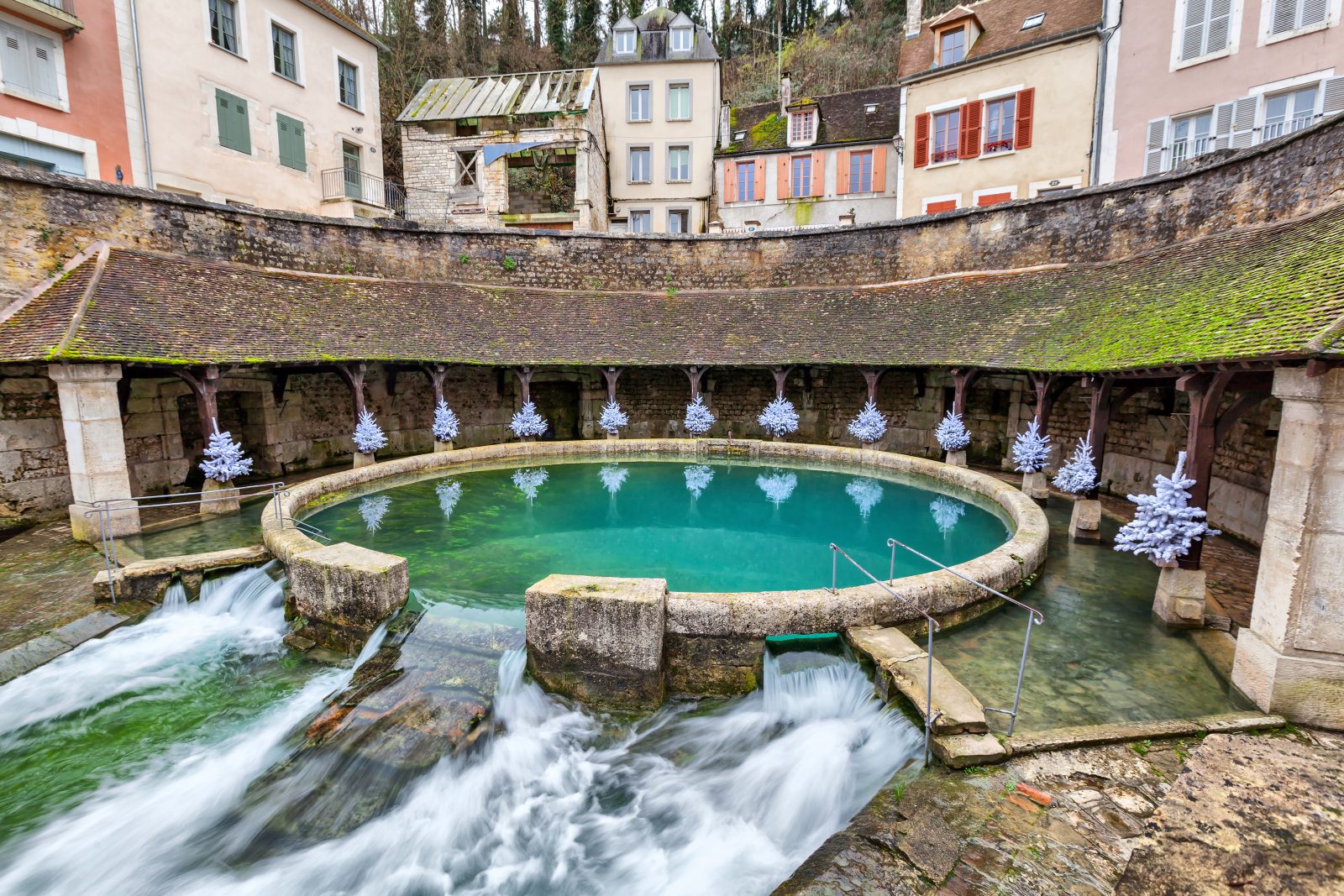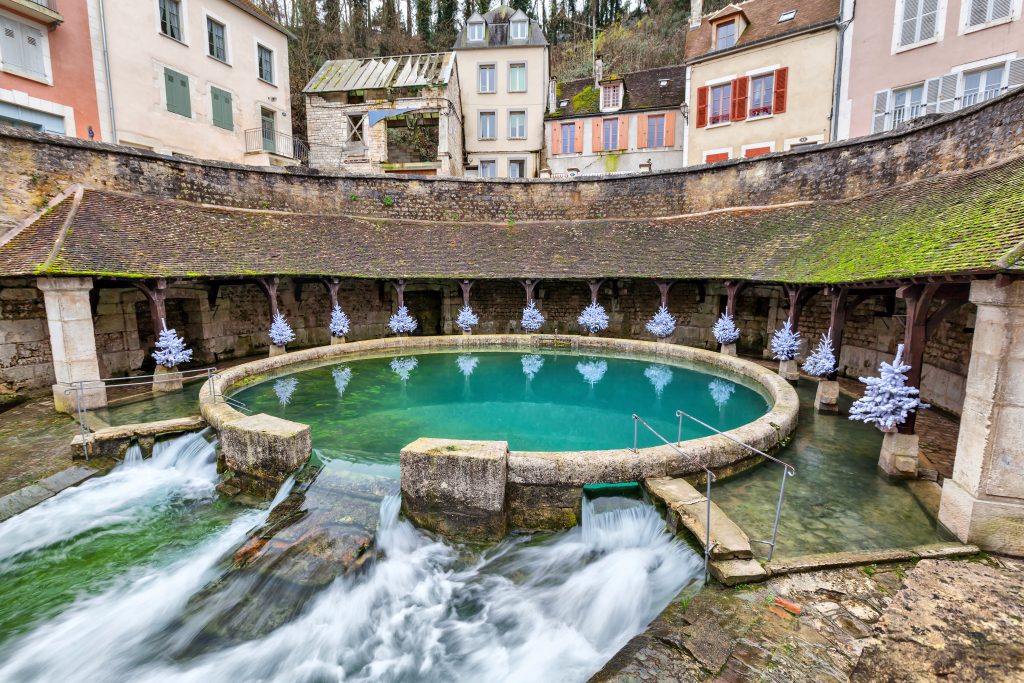The Divine & Deadly Pit of Mystery


Bodies of water are often the center of attention, especially those located in historic settings. When the water is the subject of mystery and folklore, interest can be piqued even higher. That’s certainly the case for a spring known as Fosse Dionne in France’s Burgundy region, where the water is shrouded in death, myth and mystery.
By Meena Dandridge
It’s one of the most mysterious attractions in France. In the heart of the historic and beautiful Burgundy region, surrounded by manicured vineyards, fortified Renaissance chateaux and medieval hill towns, sits one of the area’s most intriguing attractions: a seemingly bottomless spring-fed pit in the ever-charming country hamlet of Tonnarre, known as the Fosse Dionne, which means “divine pit.”
It’s a prodigious watershape, producing 311 liters of water every second, surging from this well’s depths. Despite the fact that the Fosse Dionne has been part of local’s lives for centuries, no knows for sure where the water comes from. Despite countless explorers venturing into its depths, no-one has ever been able to find its true origin. Which is why, it has remained shrouded in mystery, and even myth.
The oldest written references to the spring can be traced back to the 7th century when the Romans used it for drinking water. In the 18th century, French nobles built a washhouse known as a ‘lavoir’ around the spring, a distinctive stone structure that surrounds the vessel spring to this day. During the 18th century, a stone rim was built around the pool, with a spout at one end to allow the water to run off. For centuries it was the town’s primary source of water for drinking, cooking and bathing.
It was during its years of utility that women who peered down into Fosse Dionne’s depths while washing clothing began to wonder what lurked at the bottom. According to one legend, a deadly serpent guarded the base of the well. According to others, the spring was a portal to the netherworld.
Geologists have determined that it has a far more mundane nature. Fosse Dionne is fed by the rainwater on the surrounding hills as well by at least one subterranean river that’s known to flow beneath the region. Nowadays, it’s purely a tourist attraction. Visitors can wander around the historical washhouse buildings, peer into the blue-green waters of the spring, which look bottomless even when viewing them from the surface, and puzzle over their source.
Over the years, scientists have carried out numerous experiments at the spring to try to establish its origins. Dye tracing studies have intimated that some of the spring’s water comes from an underground section of the Laigne River, which flows above ground 27 miles (43.5 kilometres) from Tonnerre.
In an effort to solve this age-old mystery, two professional divers descended into the limestone rocks’ tight passages in hopes of reaching its source in 1974. While navigating the spring’s twisting, tapering chasms, they perished. In 1996, the town hired another diver to attempt the descent. He also died.
Despite the fear that the spring is too dangerous to dive, in 2021 Tonnarre’s mayor employed professional adventure diver Pierre-Éric Deseigne to plumb its depths, and into the abyss he went, diving more than 70 meters below the surface, venturing 370 total meters from the spring’s entrance – all while filming his expedition.
Although Deseigne explored territory that no-one had ever seen before, he nonetheless failed to locate the source, leaving France’s ancient subterranean mystery unsolved.
Meena Dandridge is a self-described luxury nature connoisseur based in Soquel, Calif. She is a competitive orienteer, yoga instructor, ocean enthusiast and manicure artist. She is known to say, “In the presence of water, we’re never alone.”
Photo by Sergey Dzyuba | Shutterstock










